JANN HAWORTH
Jann Haworth is one of the few female artists involved in the original Pop Art movement of the 1960’s. Her contribution was immense, acknowledged by her solo shows at the London gallery of infamous Pop dealer Robert Fraser in 1966 and 1969. She also enjoyed many group and solo shows across Europe and the US throughout the period, and was further honoured with a Grammy in 1968 for her co-design of the iconic Beatles Sgt Pepper album with Peter Blake. Haworth has continued to build on and exhibit her accomplished body of work over the following four decades, work that she approaches with ever-abounding enthusiasm and passion for exploration.
Born in Hollywood to an artistically talented mother and a father who won an Oscar for his film art-direction, she grew up surrounded by creativity and the manufactured ‘magic’ of the Hollywood film sets she roamed as a child. This had a profound and enduring influence on her work. A move to London in 1962 saw her enroll at the Slade School of Art, where the importance of popular mass culture within her oeuvre was perfectly in tune with the Pop Art sensibility of the era and she quickly became involved with the British movement, settling in the UK.
While an accomplished painter and draughtsman Haworth has also long focused on soft sculpture and the three-dimensional form (as did Claes Oldenburg in the US, though neither artist knew of each other’s work at the time they began). She has described her use of sewing and textiles as being “the language of women”, using her work to push forward what has by association too long been overlooked as an important artistic medium. It was Haworth who produced the first ever life-size soft figures of the Pop movement and indeed one of these, first exhibited at the ICA in 1963, appears on the Sgt Pepper cover.
Gender also holds a fascination for Haworth, having encountered the misogyny that was so rife in the art world of the 60’s. She has said “one of the maxims of modern art is that art is dead, but women haven’t even spoken yet”, referring to this undercurrent in a later series of stunning abstract work entitled The Exploding Invisible Woman. That she achieved her huge success against a tide that at the time so favoured male artists is testament to her talent and determination.
Haworth’s highly collectable work has been in demand throughout her career, her new work continuously exhibited across the globe and her early work regularly highlighted in important Pop Art retrospectives. Since returning to the US in the late 90’s she has also become increasingly involved in several high profile public and community arts projects, and is a huge supporter of the global street art movement (describing Banksy as “the natural child of Pop Art”).
Jann Haworth’s importance is threefold – her enormous contribution to the Pop Art movement, her incredible and pioneering body of work spanning four decades, and her status as a highly successful and respected female artist who has never waivered in her right to equal recognition.
-
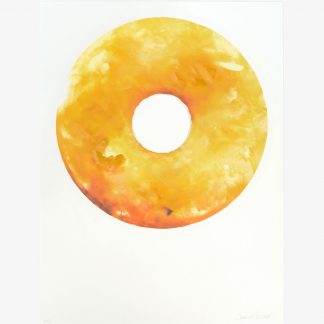
VINTAGE MARMALADE SEARED IN APRICOT BRANDY DONUT
Original oil painting on Arches Rives paper with hand torn hole
Signed by the artist in pencil
Unique piece
57 x 76cmSOLD
More info -
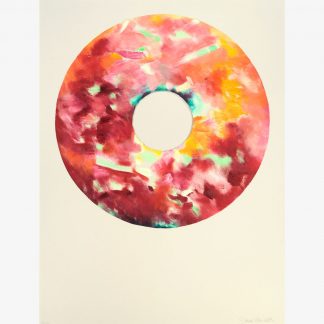
RED VELVET DEVILS FOOD DONUT
Original oil painting on Arches Rives paper with hand torn hole
Signed by the artist in pencil
Unique piece
57 x 76cmPOA
More info -
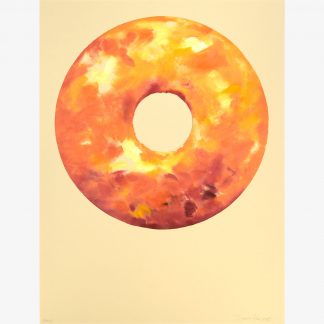
RED PEPPER WINE CRUST WITH SAFFRON HALVA DONUT
Original oil painting on Arches Rives paper with hand torn hole
Signed by the artist in pencil
Unique piece
57 x 76cmPOA
More info -
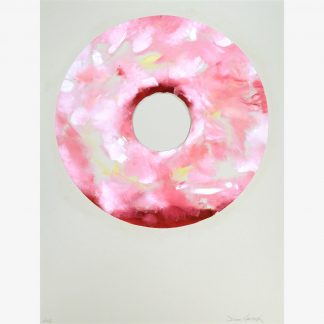
RASPBERRY ALMOND MILK FONDANT DONUT
Original oil painting on Arches Rives paper with hand torn hole
Signed by the artist in pencil
Unique piece
57 x 76cmSOLD
More info -
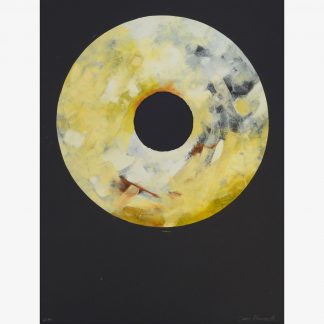
LEMON HONEYCOMB CREAM DONUT
Original oil painting on Arches Rives paper with hand torn hole
Signed by the artist in pencil
Unique piece
57 x 76cmPOA
More info -
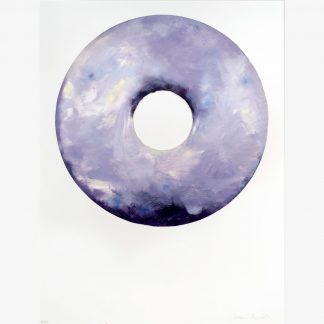
LAVENDER SCENTED ENGLISH TOFFEE GLAZE DONUT
Original oil painting on hand-torn Rives paper
Signed by the artist
Unique piece
57 x 76 cmSOLD
More info -
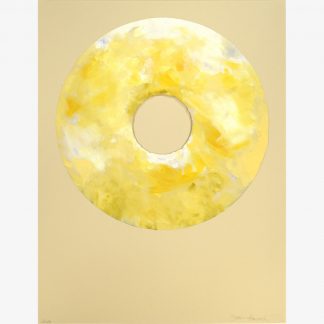
ITALIAN WHITE PEACH AND CREME FRAICHE DONUT
Original oil painting on Arches Rives paper with hand torn hole
Signed by the artist in pencil
Unique piece
57 x 76cmPOA
More info -
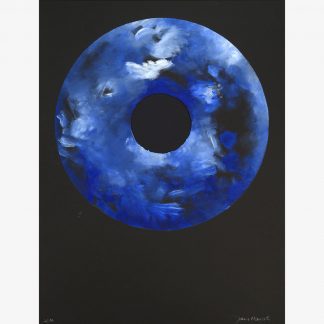
BLUEBERRY MOON WITH COCONUT SUGAR DONUT
Original oil painting on Arches Rives paper with hand torn hole
Signed by the artist in pencil
Unique piece
57 x 76cmPOA
More info -
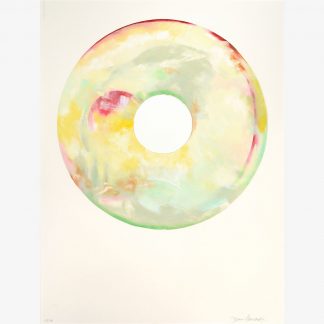
AQUA VITAE CALVADOS AND CANDIED LORD LAMBOURNE APPLE PEEL DONUT
Original oil painting on Arches Rives paper with hand torn hole
Signed by the artist in pencil
Unique piece
57 x 76cmSOLD
More info